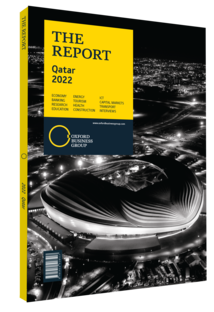Preparation for the World Cup in Qatar to support future tourism growth
In 2022 Qatar will be the first Arab country to host the FIFA World Cup, giving it the opportunity to demonstrate that the region can lead in the international sporting scene. Those involved in the preparation for the event are using it as a chance to leverage the competition for future tourism revenue, given that tournament will be shown on televisions around the world and in-person fans will share their impressions back home. The event is expected to attract over 1m visitors.
Infrastructure Investment
Attracting higher numbers of international arrivals will be key to ensuring that the new hotels, stadia and expanded transport centres generate the necessary returns after the tournament. This is also in line with Qatar Tourism’s goal to welcome 6m visitors per year by 2030.
Prior to the Covid-19 pandemic, plans for new hotels in and around Doha led to concerns of oversupply. Building plans slowed during 2020 and 2021, however, and Qatar Tourism has stated that there will not be as many hotel rooms as previously planned for the tournament. This may ultimately be a good thing for the market, as the building that has taken place will support the projected growth in tourism numbers after the tournament, but a large share of the uncharacteristically high influx of arrivals during the event will be accommodated by alternative means (see overview).
The games will take place across eight stadia, most of which were built after Qatar was awarded hosting responsibilities in late 2010. The authorities plan to use these stadia to host major events after the World Cup, in line with the government’s vision for Qatar to remain a leader in the international sporting scene in the coming years. Moreover, several facilities have been built with demountable top tiers, which will be removed after the tournament and donated to countries in need. One such venue – Stadium 974 – will be fully dismantled after use to make way for a public waterfront development. Completed in 2021, the stadium was inspired by building blocks and Qatar’s trade industry, and is composed of 974 shipping containers that can be sustainably deconstructed and rebuilt elsewhere.
In terms of facilitating travel to the country, Hamad International Airport is being expanded from its original capacity of 30m passengers per year when it opened in 2014 to 58m in 2022 in order to accommodate the increased number of flights for the 2022 FIFA World Cup, as well as support expected high numbers of arrivals after the event. The works include a larger passenger terminal with more shops, restaurants and relaxation areas, in addition to more taxiways, aircraft parking lots, baggage-handling facilities and fuelling areas.
Once in the city, fans can use the Doha Metro, which has been steadily extended since it first opened in 2019 and is slated for full completion in 2026. Over 2.5m passengers used the metro during the weeks of the FIFA Arab World Cup in late 2021, according to Qatar Rail, at an average of 130,000 passengers per day on 110 trains. Investment in the capital’s public transit system will continue to benefit tourists beyond the World Cup by easing navigation of the city.
Between Games
As fans will likely have time to explore Doha and the surrounding area, Qatar has the opportunity to showcase its culture. The Visit Qatar mobile app is already in place to help visitors navigate their options. The country offers numerous museums, mosques, heritage sites, visitor centres, malls and other sporting venues. One example is the Qatar Equestrian and Racing Club (QREC), which holds races and shows during the cooler months and promotes the appreciation of Arabian horses. “The equestrian world will actively promote sports and Qatari traditions during the World Cup to enhance the overall experience for visitors,” Issa bin Mohammed Al Mohannadi, chairman of the QREC, told OBG. The authorities hope that positive word of mouth from players, coaches and fans will spark the interest of people around the world to explore Qatar, while television coverage of the event is expected to be another way to reach potential future arrivals.
You have reached the limit of premium articles you can view for free.
Choose from the options below to purchase print or digital editions of our Reports. You can also purchase a website subscription giving you unlimited access to all of our Reports online for 12 months.
If you have already purchased this Report or have a website subscription, please login to continue.

